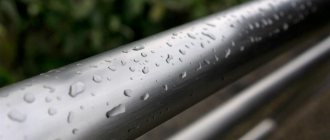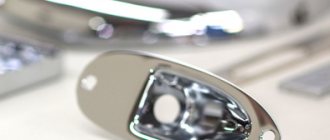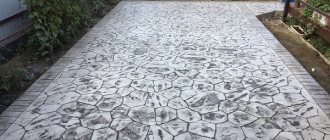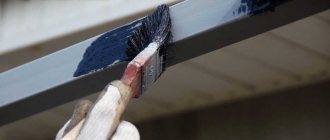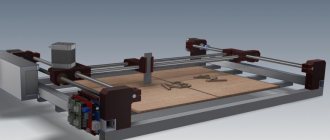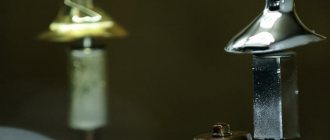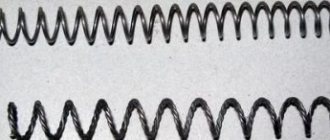The issues of effective protection and decorative design of the surfaces of products made of various materials are quite relevant both for manufacturers and for many home craftsmen. Chemical metallization, which you can do yourself, allows you to effectively solve such problems.
Chemical metallization technology can be used on virtually any hard surface
Benefits of technology
Chemical metallization is a very simple process.
Applying the coating is technologically simple. To do this, it is enough to have standard sprayers. This allows you to coat any product: from a phone case to a car hood or a statue. Any materials can be chrome-plated: plastic, ceramics, wood, plaster, etc. The degree of reflection of the coating depends on the number of layers applied. Chemical metallization gives the product additional strength and hardness. Moreover, the coating has high wear resistance. The strength here is ensured by a protective varnish that can withstand any operational wear. For the chrome plating process, dimensions do not matter. Any surface area can be sprayed in a short time. This is one of the main differences from the vacuum metallization process or galvanic electrodeposition.
Chemical coating is much cheaper than other methods. Average savings are up to 30%. In addition, the coating is environmentally friendly. In the same galvanic process, metallization occurs using toxic hexavalent components. When chrome plating, you can choose any coating color. To do this, just add a little toner to the protective varnish.
The main problems with chrome plating and methods for solving them
- Lack of coating in recessed areas of the product - occurs due to low current density in recessed areas and excess sulfuric acid in the electrolyte.
Solution: use shaped anodes, start the chrome plating process (1-2 minutes) at twice the current density - give a boost to the current, reduce the sulfuric acid content - add water or chromic anhydride to the electrolyte.
- The coating is matte or burnt (usually on protruding parts of products) - occurs due to high current density at a given temperature, passivation of anodes or insufficient heating of parts before the process.
Solution: adjust the ratio of current density and temperature, increase the distance between the anodes and cathodes, clean the anodes, control the heating of the parts before immersing them in the chrome plating bath.
- Dark stains, stripes, dots on the surface of products - insufficient concentration of sulfuric acid in the electrolyte solution
Solution: add sulfuric acid to the solution.
- The dark color of the coating means a high content of trivalent chromium, a lack of acid, and a low temperature of the electrolyte during the chrome plating process.
Solution: in addition to heating the electrolyte and adding sulfuric acid, the electrolyte should be treated with current.
- The coating peels off - poor-quality degreasing of the product surface, a sharp increase in current density with decreasing temperature.
Solution: adjust the temperature regime of chrome plating, improve the preparation of the surface of the product.
- Graininess or swelling - the presence of solid particles in the electrolyte and (or) poor preparation of the product for galvanic processing.
Solution: electrolyte filtration and quality control of parts preparation.
Plastic chrome plating process
Chrome plating is the procedure for obtaining mirror surfaces by spraying chemical components onto a plastic, glass, wood or metal base. This process is popular among car enthusiasts as it helps give plastic parts a more aesthetically pleasing appearance.
Chrome-plated elements of car bodies and motorcycles, bathroom and kitchen accessories, decorative items and exterior cladding parts of houses are becoming more in demand every year. You can chrome plating plastic elements at home using auxiliary tools.
Chrome plating of plastic parts is used for decorative purposes. Thanks to chrome plating, minor damage to the surfaces of the base material is hidden and its characteristics are improved. The following properties are optimized:
Purposes of metallization of plastics
- resistance to negative environmental influences;
- hardness of the base material;
- resistance to high temperatures;
- wear resistance;
- attractive appearance.
The chemical chromium plating process requires a careful and responsible approach to safety.
The work area at home should be well ventilated, because during chrome plating there may be chemically active elements in the air that can harm health. A garage or, in the summer months, an outdoor shed, as well as an open veranda with a roof, is suitable as a room for chrome plating. As a last resort, you can use the balcony.
Direct contact with the skin of the reagents used during chrome plating can lead to serious chemical burns. In addition, poisoning of the body is not uncommon.
Preparatory work
To perform chrome plating, you need a galvanic apparatus, which you can assemble yourself.
- You need to choose a brush with thick bristles.
- Then the bristles and handle are removed, and the membrane of the brush is wrapped in lead wire.
- Next, a handle with a hollow plexiglass body is made and installed on the brush. This will allow the brush to be filled with electrolyte.
- The current source should be a powerful transformer, to which the anode and cathode will be connected (you can use a car battery, but there will be no diode in the circuit).
- A diode is connected to a special brush made earlier, and the anode is connected to a cable leading to the step-down winding of the transformer.
- The cathode is installed on the element that needs to be chrome plated.
- Then a container for chrome plating is installed and a special composition is prepared with equal proportions of caustic soda, soda ash, silicate glue and water. The solution is thoroughly mixed and brought to a boil.
- The part that must undergo the chrome plating process is placed in a ready-made degreasing solution.
- A special electrolyte is prepared using chromic anhydride, sulfuric acid and water.
- Before you start chrome plating plastic yourself, you need to change into overalls, protect the skin of your hands, eyes and respiratory organs with special means (goggles, rubber gloves, respirator).
Chrome plating of parts: step-by-step instructions
Chrome plating technology is not particularly complicated.
In order to prepare electrolyte for a small product, you need to take an ordinary glass jar of the required size or a plastic bucket and place it in a special tank. For these purposes, you can use a can. For electrolysis to be of high quality, it, the can, must be thermally insulated. Namely, take a wooden box or box, insulate it with fiberglass or polystyrene foam, as well as additional mineral or glass wool, sand and place the tank there.
Place a heating element and a thermometer inside the tank. Cover the top with a sheet of moisture-resistant plywood, which will act as a sealing cover, and attach the electrodes. Attach the cathode to the product, and immerse the anode (rod or plate) into a container with the sample.
The part in the can must be held with a bracket to ensure chrome plating on all sides.
Preparation of electrolyte solution
To carry out chrome plating of parts at home, you need to prepare a special solution consisting of chromium anhydride (250 g per liter of distilled water) and sulfuric acid (2.5 g per liter of water).
First you need to fill half the container with heated water (about sixty degrees Celsius). Add the required amount (based on the total displacement) of chromium anhydride, stir until completely dissolved, and add water to obtain the required volume. Then add sulfuric acid, stirring the liquid.
The resulting solution must be worked for three and a half hours, passing current energy through it (about 6 A per 1 liter). When the electrolyte turns dark brown, it will need to stand for at least a day.
Sample preparation procedure
Before preparing the part, you need to heat the electrolyte solution to sixty degrees Celsius and let it stand for three hours.
During this time it is necessary:
- Clean the part from dirt, rust, paint.
- Carry out degreasing using a special solution, for which there are several recipes. For example, it may consist of 150 g of sodium hydroxide, 5 g of silicate glue, 50 g of soda ash. Take everything per liter of water. Mix the ingredients, heat to ninety degrees Celsius, lower the product and leave for at least twenty minutes, and sometimes longer, depending on the size and degree of cleansing.
Direct chrome plating
During the chrome plating procedure, it is necessary to maintain the temperature of the electrolyte solution at an average of 53 C° (plus or minus two degrees). Place the product in the electrolyte and after a minute, apply voltage to equalize the temperatures of the sample and solution. Remove the part and dry for at least two and a half hours
Occurrence of defects
When chrome plating at home, defects such as:
- The surface shines unevenly. Occurs due to high current or low temperature of the electrolyte solution.
- Lack of shine - due to incorrect amount of chromium anhydride, excessive current, lack of sulfuric acid.
- The presence of brown spots means an excess of chromic anhydride and not enough acid.
- The layer is uneven. Excess current.
- Softening of the coating – high solution temperature, low current.
- Chrome plating falls off - unstable voltage, poorly carried out dehydration, low solution temperature.
Chrome plating at home is a process that requires a certain skill and strict adherence to the rules and instructions. Any violation can lead to poor-quality chrome plating. Therefore, it is worth studying the technology of this process in detail and only then proceeding with its implementation.
Chemical chrome plating
Application area
The electric arc metallization method in combination with subsequent painting of metal structures is a hybrid coating, the service life of which significantly exceeds the sum of the service life of each layer separately due to the synergy effect. Such coatings are used for long-term anti-corrosion protection of products operated under conditions of exposure to aggressive factors inside and outside structures, in liquids. Coatings formed as a result of electric arc metallization are used to protect:
- metal structures;
- reinforced concrete supports of overpasses, bridges;
- fuel and oil storage facilities;
- pipelines;
- equipment for petrochemical industry enterprises, heating networks.
Materials and equipment used
Chemical metallization, as mentioned above, can be done with your own hands and in a home workshop. Moreover, products that are small in size and simple in shape are processed using this method even without the use of special equipment. If you have such equipment at your disposal, then you can chemically apply a layer of metal even to large parts of complex configurations.
When performing this procedure yourself, you should be extremely careful, as this involves using chemicals that are hazardous to health. If you properly prepare the equipment and materials for performing chemical metallization, then you can obtain coatings on various products with your own hands at home, the quality of which is practically no different from those formed at the factory.
Reagents for chemical metallization
The kit for chemical metallization must contain reagents that have the properties of an activator and a reducer. To perform this procedure, you will also need a primer, which is applied to the surface to be treated, and a varnish that protects the finished coating from the negative influence of external factors. To apply the final varnish coating, you should choose a material that has high hardness and wear resistance.
To color the applied metal layer in the desired color, you can use a special color toner. The primer mentioned above is necessary in order to improve the adhesion of the applied metal layer to the material from which the product being processed is made. The result of do-it-yourself chemical metallization may not always be of high quality. However, the applied coating can be removed using special removing solutions.
The chemical metallization unit is designed for coating any hard surface
Three parts of the galvanic process
Electroplating at home, chrome plating is an electroplating process. Therefore, to carry it out, it is necessary to have three components: a cathode, an anode and an electrolytic medium in which the transfer of charged metal particles will occur.
- Cathode. A plate of pure lead or an alloy of lead and tin. It must be remembered that the cathode area must be larger than the anode area. The cathode is connected to the positive output of the rectifier.
- Anode. This is the chrome-plated part itself. It should hang in the electrolyte medium so as not to touch the walls and bottom of the container. In addition, the anode must never touch the cathode.
- Electrolyte. Chromium plating requires particularly careful preparation of the electrolyte.
Electrolyte preparation
The electrolytic fluid kit for chrome plating includes the following components:
- Chromic anhydride: 250 g/l.
- Sulfuric acid: 2−3 g/l. Chemically pure, concentrated. Technical sulfuric acid is not suitable.
- Distilled water.
The water is heated to a temperature of 60−80 degrees. After this, the anhydride dissolves in it. The solution is cooled slightly and then the required amount of sulfuric acid is added to it in a thin stream.
Preparing the surface of a chrome-plated product
Consists of three stages:
- Mechanical cleaning, grinding and polishing.
- Degreasing.
- Nickel plating.
The peculiarity of chrome plating is that, on the contrary, it emphasizes all existing irregularities, chips and cracks on the surface of the product. Therefore, traces of old paint, rust, chips, cracks and other defects must first be removed from the surface of the chrome-plated part. Preparation of the chrome surface consists of the following steps:
- Sandblasting.
- Polishing with fine sandpaper.
- Sanding with soft materials and polishing paste.
Do not use gasoline or White Spirit for degreasing. Otherwise there will be problems with the quality of chrome plating. The best option is to prepare a special solution:
- Caustic soda: 150 g/l;
- Soda ash: 50 g/l;
- Silicate glue: 5 g/l.
The solution is heated to 90 degrees. After that, the part is lowered into it and kept for 20-40 minutes, depending on the area and surface relief of the part.
Nickel plating is the last stage of preparing a part for chrome plating. The nickel plating process is carried out in a special galvanic bath. The cathode in this case is metallic nickel, and the electrolyte is a solution of sulfuric acid and nickel salts.
Metallization process
To obtain the desired appearance of the product, it is subjected to chemical metallization, which occurs using special equipment and chemical reagents. Process time may vary. It depends on the desired results and how thick the metal layer should be. Usually the process lasts 5-8 hours. You also need to remember that chemical metallization takes place at a certain temperature. It must be maintained throughout the entire process.
After chemical metallization is carried out, the product is taken out, washed and dried. Chemical reagents should not be left on the surface, as they are hazardous to health. To more effectively eliminate all residues after washing, the product must be boiled in special equipment.
Usage
The use of chromium in ferrous metallurgy is large - it is about 2/3 of the total metal smelting. The production of chrome-plated alloys is profitable - even small additions of alloys give the alloy the best qualities of a resistant metal.
We recommend: COPPER - the foundation of civilization
The remaining third is mainly used for chrome plating. Chrome plating can be functional, decorative, or combine both qualities.
Chrome wheels
Plumbing products are simply designed for chrome plating. Heat, moisture, and chemicals will not damage the faucet, shower, or bathroom accessories.
Informative: often the protective layer is applied to a previously created “primer” of copper and nickel.
A layer of functional chrome plating protects parts from corrosion; its thickness reaches several millimeters.
Decorative chrome plating is for beauty; its layer is thin, only 0.2-0.7 microns.
Chrome plating happens:
- electrolytic;
- chemical;
- vacuum;
- diffuse.
Interesting: a gas plasma spraying method has been developed that makes the chrome plating process safe.
The essence of technology
Chemical metallization technology can be used to achieve a variety of purposes, most of which are associated with changing the decorative qualities of the surface. In addition, this processing method allows you to hide the main defects of metal or other material: microscopic cracks and pores, other structural defects. In some cases, technology is used to restore coverage.
The essence of the technology is to apply a thin layer of metal. The specifics of the substance application process depend on the specific technology, of which there are quite a few.
Metallization allows you to impart certain performance qualities to parts. Among the achieved characteristics of the processed product, we note the following:
- Hardness increases. Metal is more durable than plastic. By covering the surface of plastic or wooden products with it, you can protect the base from mechanical stress.
- Decorative properties increase. The metallic glossy finish looks very attractive.
- The wear-resistant qualities of the surface are improved. Metallization is often carried out in order to reduce friction between contacting parts.
Chemical metallization at home
If you decide to do chemical metallization yourself, you should not only study the theoretical material, but also watch a training video on this topic. Naturally, it is necessary to prepare a set of equipment and consumables to carry out this technological process.
For chemical metallization, chemical reagents that are hazardous to health are used, and when working with them, safety requirements must be strictly observed. The technology of chemical metallization itself, as mentioned above, is not particularly difficult and resembles conventional painting. The main thing is to strictly adhere to a certain sequence of actions. You can learn more about this technique in videos that are easy to find on the Internet.
The simplest installation for chemical metallization may consist of an enamel container and a blowtorch. To perform the treatment, you will need the appropriate reagents and knowledge of chemistry to mix them correctly. Having studied the theoretical material, watched the corresponding video and prepared your apparatus for chemical metallization, you can proceed to the metallization itself.
The algorithm of actions in this case is as follows:
- Carry out thorough cleaning of the treated surface from contaminants.
- Perform degreasing. This stage should be approached very responsibly, since the characteristics of the applied coating largely depend on the quality of its implementation. This procedure can be carried out using an alkaline solution or a high-quality detergent, which allows you to remove all organic contaminants from the surface of the product.
- Wash the grease-free surface with water.
- If not the entire product is subjected to chemical metallization, then those areas of it that will not be coated must be insulated with lead that is resistant to the effects of an electrolytic solution.
- The product is attached to a wire through which electric current will be supplied to it, and lowered into a container with an electrolytic solution. The product should be kept in this solution for an hour.
- The treated product is removed from the solution, dried, cooled and, if the quality of the applied coating is high enough, polished.
At home, you can use a mini-installation for chemical metallization, powered by a compressor
In order to obtain a high-quality metal layer on the surface being treated without harming your health, you should follow certain recommendations.
- Before starting the procedure, you need to check the reliability of all electrical contacts that will bear the main load.
- When performing all stages of chemical metallization (especially when removing the workpiece from an electrolytic solution), you should use rubber gloves that will protect the skin of your hands from chemical and thermal burns.
- The room in which chemical metallization is performed must be well ventilated. This requirement is explained by the fact that when this procedure is performed, intense gases are released and fog is formed, which irritates the mucous membranes of the respiratory and visual organs.
- When performing chemical metallization, it is advisable to use a respirator and safety glasses.
Metallization using standard spray equipment
In general, if you properly prepare for chemical metallization, carefully study all the theoretical aspects of this process and watch the corresponding video, then as a result you can obtain high-quality decorative coatings that also have excellent protective properties. Using this technology, even at home you can make various decorative products, restore the surfaces of worn parts, and apply a coating to them that protects them from the negative influence of the external environment.
Various processing technologies can be used to protect fragile materials and decorate them. Chemical metallization is a process that involves the formation of a thin protective layer on a surface of various shapes. This technology has a large number of features, which we will discuss in more detail later.
Chemical coating methods
Chemical processing methods are based on the effect of chemically active substances on the surface of the workpiece being processed . As a result of the ongoing chemical exchange reactions, either the surface layer dissolves in the environment or the substance is deposited from the environment onto the surface of the workpiece . This made it possible to use chemical methods, firstly, for surface and deep etching of workpieces and, secondly, for deposition of coatings (films) onto the treated surface.
Chemical methods for producing coatings are implemented without applying electric current to the environment in which the processing is carried out by deposition of metal from aqueous solutions or from a gaseous environment (phase). Coatings of this type are known in the literature as chemical coatings.
Direct application of a chemical coating to the surface of the workpiece must be preceded by preparation of the surface for this operation.
Chemical methods of coating by deposition from aqueous solutions
There are several methods for chemical deposition of metals from aqueous solutions: contact; contact chemical; chemical reduction method (chemical metallization).
The contact method is based on the displacement of ions of the deposited metal from the solution by a more active metal . An example of the implementation of this method could be the copper plating reaction of an iron nail placed in a solution of copper sulfate.
Fe + CuSO4 = FeSO4 + Cu↓.
The contact-chemical method of metal deposition involves creating a galvanic couple between the base metal and a more active metal. Thus, when silver is deposited on a copper base, a galvanic couple is created using the more active metal aluminum or magnesium. In this case, the more active metal donates its electrons to copper, and on the negatively charged copper surface, Ag+ ions are reduced to metal.
The method of chemical reduction (chemical metallization) is that metal coatings are obtained by reducing metal ions from aqueous solutions containing a reducing agent.
Chemical methods of applying metal coatings, with their comparative simplicity, provide high adhesion strength of the metal layer to the base (up to 2 MPa), uniform layer thickness and its high electrical conductivity . These methods make it possible to obtain uniform coatings on parts of complex configurations, not only on external, but also on internal surfaces.
Let us further consider the features of the chemical metallization process and the production of the most common processes of chemical deposition of coatings: oxidation, bluing, phosphating and chromating.
Chemical metallization is the application of a metal coating to the surface of a workpiece by chemical deposition. Chemical metallization can be carried out on both metals and non-metallic materials, such as plastics.
The chemical method for producing metal coatings on metals is based on the reduction of ions of the deposited metal from a solution as a result of its interaction with a reducing substance (reducing agent) located in the solution. The reducing agent, when oxidized, gives up its electrons to the metal ions present in the solution, which turn into atoms and are deposited on the workpiece surfaces in the form of a metal film. The reduction reaction proceeds intensively on the metal surface of the coated workpiece, which is catalytic for this process.
Currently, methods have been developed for producing coatings by chemical reduction of more than 20 different metals . The same method is used to produce coatings with binary and ternary alloys, for example, Ni-P, Ni-B, Ni-Mo-B, Ni-Co-P alloys. Chemical nickel plating and chemical copper plating of workpiece surfaces are widely used in industry.
The basis of chemical nickel plating is the reduction of nickel ions from aqueous solutions and their deposition in the form of atoms on the surface of the workpiece . This method can coat the outer surfaces of workpieces of complex shapes and internal surfaces that are inaccessible for coating by other methods. Nickel coating is successfully used for corrosion protection of power equipment operating at temperatures of 600...650 0C in a gas environment, for coating magnesium and titanium parts of helicopter rotors, as well as aluminum mirrors used on satellites in space . It is also used to protect surgical instruments and watch parts from corrosion.
Chemical copper plating . The reduction of Cu2+ ions from a solution containing copper salts with formaldehyde (in the form of methylene glycol hydrate HCHO + H2O CH2(OH)2) in order to obtain copper mirrors on glass has been known since the end of the 19th century. This process has become widespread for the manufacture of simple and multilayer printed circuits, metallization of plastics, production of copper mirrors and for other purposes.
Metal coatings on plastics, as it were, ennoble the products, strengthen them, and make them more resistant to heat, light, radiation, mechanical and other influences . The properties of metallized plastic products, on which their widespread use is based, largely depend on the method of applying the metal coating.
For example, the method of chemical copper plating of plastics in the manufacture of printed circuit boards . Reduction of copper on the surface of a plastic printed circuit board is carried out from a solution containing copper and nickel salts, as well as formaldehyde, soda and other chemicals. The duration of deposition of a copper layer with a thickness of 0.25...0.5 microns is 15...20 minutes . To remove hydrogen released during the copper plating process and for better wetting of the treated surfaces with the solution, the process is carried out with smooth rocking of the boards or with the application of ultrasonic vibrations to the technological system.
Chemical oxidation. Oxidation is the application of oxide coatings to metals using chemical and electrochemical methods. Chemical oxide films are formed when metals are processed in solutions containing oxidizing agents that are capable of generating oxygen on the surface that interacts with the metal .
Blueing. for oxidizing carbon and low-alloy steels and cast irons, called “bluing,” are widely known in industry On the surfaces of products made from these materials, porous films of iron oxides (Fe3O4 and others) with a thickness of 1...10 microns are created by bluing. Burnishing is used primarily for decorative finishing of a surface by giving it a certain color . The color of the forming film is determined by the thickness of the coating and changes successively with increasing thickness from yellow to brown, cherry, violet, blue and gray.
The following types of bluing exist :
— alkaline — bluing in alkaline solutions with oxidizing agents at a temperature of 135...150 °C;
— acid — bluing in acidic solutions by chemical or electrochemical methods;
- thermal - oxidation of steel at high temperatures: in an atmosphere of superheated water vapor at 200...480 °C or in vapor of an ammonia-alcohol mixture at 520...880 °C, in molten salts at 400...600 °C, as well as in an air atmosphere at 310…450 °C with preliminary coating of the surface of parts with a thin layer of asphalt or oil varnish.
The structure of the coating is fine-crystalline, microporous. To add shine, as well as improve the protective properties of the oxide film, it is also impregnated with oil (mineral or vegetable).
Nowadays, bluing is used primarily as a decorative finish , and previously to reduce metal corrosion.
Strong oxide films are also obtained on copper and its alloys. Magnesium alloys are also subject to chemical oxidation. The thickness of the oxide films on them ranges from 2 to 5 microns, the maximum operating temperature of such films is in the range of 200...250 oC.
Phosphating. Phosphating is a method of applying a coating to the anode (workpiece) consisting of a fine-crystalline layer of mixed iron, zinc or manganese phosphates.
Phosphating is mainly used to form on ferrous metals (low-carbon and carbon steels, cast iron) a poorly soluble phosphate film of the Me3(PO4)n type , where the designation “Me” corresponds to the base metal on which the coating is applied. Non-ferrous metals are subjected to phosphating less often than ferrous metals.
Phosphating can be carried out by chemical and electrochemical methods. This process is carried out in aqueous solutions of drugs known as MAZHEF (manganese, iron, phosphorus), which are based on monosubstituted salts of orthophosphoric acid (H3PO4) of manganese, iron (MnHPO4, Fe(H2PO4)2, Mn(H2PO4)2).
In order to obtain a phosphate film, an aqueous solution of salts undergoes hydrolysis
Me (Η2ΡΟ4)2«Me(HPO4) + Η3ΡΟ4.
When heated to boiling point, hydrolysis proceeds further
5Me(H2PO4)2 « 2Me(HPO4) + Me3(PO4)2 + 6Η3ΡΟ4.
As is known, when iron reacts with phosphoric acid, mono-, di- and tri-substituted phosphates are formed and hydrogen is released:
Fe + 2H3PO4 = Fe(H2PO4)2 + Η2,
Fe + Fe(H2PO4)2 = 2Fe(HPO4) + Η2,
Fe + 2Fe(HPO4) = Fe3(PO4)2 + H2.
Dissociation of monosubstituted phosphates can occur in parallel
3Fe(H2PO4)2«Fe3(PO4)2 + 4Η3ΡΟ4.
Monosubstituted phosphates are highly soluble in water, dibasic phosphates are difficult to dissolve, and trisubstituted phosphates are practically insoluble. The last two compounds are the basis of the phosphate film that forms on the surface of the processed products.
The thickness of the phosphate coating is usually 10...12 microns, but in some cases coatings with a thickness of several tens of micrometers are created. Phosphate film is not afraid of organic oils, lubricants, hot materials, toluene, benzene, and all gases except hydrogen sulfide . It has higher corrosion resistance than oxide film. Therefore , phosphate coatings are used to protect surfaces from atmospheric corrosion . This type of coating is also used for priming the surface before applying paints and varnishes, reducing friction when performing drawing and thread rolling operations, insulating sections of steel surfaces before tinning, lead plating, galvanizing; for electrical insulation of transformer plates, rotors and stators.
Chromating is a method of chemically applying a thin-film coating of chromates (salts of chromic acid H2CrO4) on the surfaces of workpieces made of steel, zinc, cadmium, magnesium, aluminum and their alloys . During the chromating process, passive films less than 1 micron thick are formed on the surface of these metals, consisting of salts of sparingly soluble chromates (Fe2(CrO4)3, ZnCrO4, CdCrO4, MgCrO4, Al2(CrO4)3) of green, yellow, black or pale blue colors , which significantly improve the corrosion resistance of the part . Chromium plating is widely used to coat galvanized steel to protect it from the formation of white rust during transportation and storage.
Chemical chromatization is carried out using an aqueous solution of chromic acid or chromate, often containing other additives such as phosphoric and hydrochloric acids.
Preparation for the procedure
Due to its simplicity, chemical chrome plating does not require significant financial costs. It is not difficult to perform chrome plating at home using this technology; to do this, it is enough to carefully study the theoretical material and watch the corresponding video.
During the chemical chrome plating process, contact of solutions with unprotected areas of the body should be avoided.
Such chrome plating at home should only be carried out in non-residential premises in which effective ventilation is organized. In addition, it is necessary to use personal safety equipment:
- a respirator that protects the respiratory system;
- glasses for eye protection;
- gloves, clothing and shoes that protect the skin;
- oilcloth apron.
Solutions for chrome plating, performed using chemical technology, as well as for carrying out all auxiliary technological operations, are prepared on the basis of distilled water. The reagents used in this case must be marked with the letter “C”, which indicates their chemical purity. The containers in which working solutions are prepared can only be glass or enamel.
Reagents for chemical chromium plating
Before chemical chrome plating, the surface of the product should be thoroughly cleaned and degreased. The reliability and quality of chrome plating are largely determined by the thoroughness of these procedures. If the surface to be treated is sufficiently dirty and there are remnants of the old coating or traces of corrosion on it, then it is treated using a sandblasting machine or emery cloth, achieving a metallic shine. Preliminary grinding and polishing of the product allows you to create a more reliable and high-quality chrome coating. After performing these technological procedures, the surface to be treated is degreased using an aqueous solution containing the following components:
- caustic soda – 100–150 g/l;
- sodium carbonate – 40–50 g/l;
- liquid glass – 3–5 g/l.
Washing and degreasing parts before chrome plating
To perform degreasing, the resulting mixture is heated to 60–100° and only after that the product being treated is lowered into it. Depending on the degree of surface contamination, the product is kept in a heated solution from a quarter of an hour to 60 minutes. To improve the adhesion of chromium to the surface being treated, you can additionally perform pickling, which is carried out in a solution of hydrochloric and sulfuric acids.
If it is necessary to perform chemical chromium plating on aluminum, a product made of this metal is also subjected to zincate treatment, after which it is washed. Before chemical chrome plating of steel alloy parts, a layer of copper is first applied to their surface. For this, an aqueous solution is used, including the following components:
- copper sulfate – 50 g/l;
- concentrated sulfuric acid – 5–8 g/l.
The operating temperature of such a solution, in which the product is kept for several seconds (5–10), should be 15–25°. After exposure to the copper plating solution, the product is washed with water and dried. If the steel after copper plating is additionally coated with a nickel layer, the thickness of which will be about 1 micrometer, then the chrome plating performed in the future will be of higher quality.
Safety conditions
Chemical metallization (chrome plating) is a process hazardous to health, so it is important to comply with safety requirements. The process itself should take place in a well-ventilated room. It is good if high-quality forced ventilation is installed in this room. When starting chemical metallization at home, it is important to take care of protective equipment for the respiratory system, vision, and skin, that is, special glasses, a respirator, closed clothing, an apron, and gloves.
To prepare the necessary solutions, only distilled water is used. It is also worth thinking about the reagents - they must be pure, of high quality, and marked “C”. Dishes for reagents are also important - containers should be glass or enameled.
Chemical metallization
Chemical metallization is the formation of a thin film of metal on the surface being treated under the influence of various chemical reagents. This method can be used to obtain coatings with zinc (zinc plating), chromium (chrome plating), aluminum (alitizing) and others. Using this technology, it is possible to obtain an even layer of metal on materials with different types of surface: smooth - glass, porcelain, polished stone, or porous: wood, plastic, gypsum.
Workplace and equipment
As a result of the chemical reaction, a gas is released that negatively affects the mucous membranes of the respiratory tract, so the process must be carried out in a room with forced ventilation or in an open space.
Equipment you will need:
- enamel bath;
- measuring cups with a capacity of 1 l and 250 ml;
- 3 bottles of 100 ml;
- disposable syringes for 5, 20, 50 ml3;
- disposable glasses of 50 ml;
- kitchen electronic scales.
Don’t forget to get rubber gloves, a respirator, sponges, and a set of protective clothing, as caution is required when working with concentrated hydrochloric acid, otherwise burns are inevitable
Reagents
Depending on the material of the workpiece and the type of coating, reagents are purchased. For chemical metallization with silver, you will need the following reagents:
- hydrochloric acid;
- silver nitrate;
- tin chloride;
- sodium hydroxide;
- ammonia;
- glucose;
- formalin;
- distilled water.
Preparation of solutions for:
- surface activation - stannous chloride, hydrochloric acid, distilled water;
- recovery - glucose, formaldehyde, distilled water;
- silvering - silver nitrate, sodium hydroxide, ammonia, distilled water.
Surface preparation
the surface is prepared in several stages. Porous and painted products are sanded, the old paint layer is removed, the surface is cleaned of dust, washed and degreased. You can degrease with white spirit, acetone or a solution of sodium hydroxide in water t= +40...+60°C. The surfaces are wiped with a sponge containing a degreasing compound, then washed with distilled water with another sponge. The prepared surface must be completely wetted with water, without dry spots - in these places defects will be inevitable.
Coating the product with an activating composition
The object to be treated is poured with tin chloride evenly over the entire surface for 1 minute, then washed with distilled water for 3 minutes.
Metallization
To obtain a uniform metal film, a solution of a reducing agent and silver plating is sprayed onto the product simultaneously and in equal volumes. Since the resulting mirror film is very thin and not durable, it can be strengthened with a protective varnish - transparent or tinted.
The described method resembles the painting process. There is another, more complex way of performing work - electrochemical metallization.
Chrome plating stages
Chromium plating itself consists of a number of successive stages:
- The process begins by raising the temperature of the electrolyte in the bath to 50-54 degrees.
- A chrome-plated part is placed with the cathode output first connected to it.
- After this, wait for some time without applying voltage to the system. During this time, the temperature of the part and the electrolyte should equalize.
- After applying voltage, the workpiece is in the solution for at least 20 minutes. In some cases, chrome plating can last 2-3 hours. Everything is decided on an individual basis depending on the size of the part and the required final characteristics of the chrome coating.
- After the process is completed, the part is removed from the solution, washed and placed in a drying cabinet for 2-3 hours.
There are a lot of video tutorials on galvanizing on the Internet, in particular, on chrome plating of metals. Therefore, all the details of this process can be found there.
The issues of effective protection and decorative design of the surfaces of products made of various materials are quite relevant both for manufacturers and for many home craftsmen. Chemical metallization, which you can do yourself, allows you to effectively solve such problems.
Chemical metallization technology can be used on virtually any hard surface
Technological features of metallization
Metallization technology is produced in the following states:
- in a cold state;
- in a heated state;
- diffusion.
Products made of metal, any type of plastic, wood, glass, gypsum, concrete and other materials can be subjected to this processing method as metallization. The most common method of coating at home is spraying. Materials intended for the process can be found in stores. They are usually sold in pressurized cans with a spray nozzle.
A protective layer on metallized parts can be obtained:
- in a liquid medium;
- in a gas environment;
- using solid components.
Application of metallization coating in a cold state or heated to a low temperature is typical for the first group and subgroup 2a. During the cycle, the dimensions of the part change to the thickness of the applied layer of metals or their alloys.
Subgroup 2b is characterized by saturation of the surface layer by diffusion at high temperatures. During processing, an alloy is formed, and the dimensions practically do not differ from the specified ones.
Types of metallization
Metallization is the application of a thin metal layer to a surface. This way not only metal products can be processed, but also plastic, wood, glass and others. The most popular and well-known types of this process are chrome plating (that is, metallization with chromium) and galvanizing (when the surface of the product is coated with a layer of zinc). A lesser known type is aluminizing (applying a layer of aluminum to the surface).
Depending on the equipment and technology, there are several types of metallization:
- Galvanic. It is performed in a special electrolyte, which is poured into baths.
- Electric arc metallization. The coating here is applied in the following way: electric arc melting of a metal electrode is used.
- Gas plasma spraying technology is similar to electric arc metallization, when molten, finely dispersed metal is applied to the surface. Gas plasma spraying, like electric arc metallization, is a rather complex technological process, so it is used mainly in production.
- Cladding. In this method, a layer of metal is applied to the surface of the product, after which hot rolling is applied.
- Metallization is diffuse. High temperature causes atoms of the applied metal to penetrate the surface of the workpiece.
- Hot type of metallization. The coating is formed when the product is immersed in molten metal.
- Chemical metallization. This type is perfect for use at home.
Chrome Plating Basics
Modern technology of chemical metallization allows the use of special paints and varnishes and reagents to develop spraying. As a result, the coating will shine and reflect surrounding objects. In addition, it is chemical metallization that allows you to achieve the highest degree of adhesion
It is important that the coating process is carried out without the aid of any caustic substances or explosive components. Carcinogenic components of chrome plating are reduced to an absolute minimum
Chemical metallization has no restrictions on the shape and size of the product. There is also no need to place the item in a liquid acidic environment or resort to high heat.
Preparing the surface for chrome plating is similar to the process before applying paint. Thanks to this, mirror coatings can cover any base, but it is better if they are metallic. Such chemical treatment does not require significant cash injections. It is enough to purchase a special installation and reagents. As a result, the owner of the equipment will be able to apply a “silver mirror” even to porous or organic materials. No other technology can produce similar results. Today, chrome plating is a powerful competitor to other metallization processes.
Necessary equipment
Only a potential suicide can carry out chrome plating in the kitchen of a residential apartment.
In order to begin the process of chrome plating a headlight, you must have a special room for this, as far away as possible from residential buildings. A spacious workshop or garage is best suited for these purposes. Good forced ventilation is a must. All containers with gasoline, paints, varnishes and other solvents must first be removed from the premises. It is mandatory to purchase a good fire extinguisher and consider an option for an emergency exit from the premises in the event of an emergency. For chrome plating you must have:
- Galvanic bath. Either glass or durable plastic that can withstand temperatures up to 100 degrees.
- Rectifier. Constant current source with the ability to regulate the output voltage. Parameters - 12V/50A. If we are talking about small parts, then you can use a car battery charger.
- Heater. Must withstand long-term exposure to an aggressive acidic environment. For example, a ceramic heating element. An ordinary heating element will not work.
- Thermometer. With divisions from 0 to 100 degrees. The optimal temperature for the process is 45−55 degrees.
Chemical reagents used
Chemical metallization technology involves the use of various substances that bind together to form a protective coating after undergoing a chemical reaction. Using an activator and reagents for chemical metallization, you can do without special equipment, but the method is not suitable for large parts.
To carry out the processing in question you will need:
- The reducing agent is the main component. Chemical metallization reagents should be stored according to the recommendations provided by the manufacturers.
- The activator is also an important reagent that determines the performance of the surface. Chemical metallization reagents have labels that indicate the name of the metal. Let's take gold, mel and chrome as an example.
- The primer is applied to the surface to ensure the most favorable processing conditions. It significantly increases the adhesion of the applied metal.
- The varnish protects the applied coating from chemical and mechanical influence.
- In order to give the surface a certain color, special toners are used. The specific shade is indicated on the toner packaging.
Reagents for chemical metallization
It is worth considering that when doing the work yourself, it is quite difficult to ensure high quality surfaces. In some cases, you have to use special cleaning compounds.
Considering the disadvantages of chemical metallization, we note that when carrying out this procedure, harmful chemicals are used, work with which must be carried out in strict compliance with safety precautions. This technology is quite simple to implement and resembles the method of coating a surface with a paint and varnish substance.
If you find an error, please select a piece of text and press Ctrl+Enter.
Preparing the part for metallization
While the electrolyte is settling, it's time to do this.
Removing contaminants
In order for chrome plating to be of high quality and inexpensive, the layer covering the part must be uniform and thin. This can be achieved if the surface is cleaned down to the very base. How to remove foreign fractions and degrease is up to you to decide. For samples with smooth edges, as a rule, “sandpaper” is sufficient. In other cases, you will have to think about how and with what to remove dirt and rust.
Degreasing
This is the second preparatory stage. Limiting yourself only to traditional means - gasoline, white spirit, solvent “666” or something similar - means you will not achieve high-quality metallization. Chrome plating on such a surface will not last long.
Additional processing is carried out in a solution that is specially prepared for these purposes. There are many recipes, but the most popular for metallization at home is the following:
150 (caustic soda) + 50 (soda ash) + 5 (silicate glue).
*Based on g/l of water.
The pre-treated workpiece is immersed in this solution, which must be brought to a temperature of 85 (±5) ºС. The exposure time depends on the relief of the part and the degree of its residual contamination (from ⅓ to 1.5 hours).




